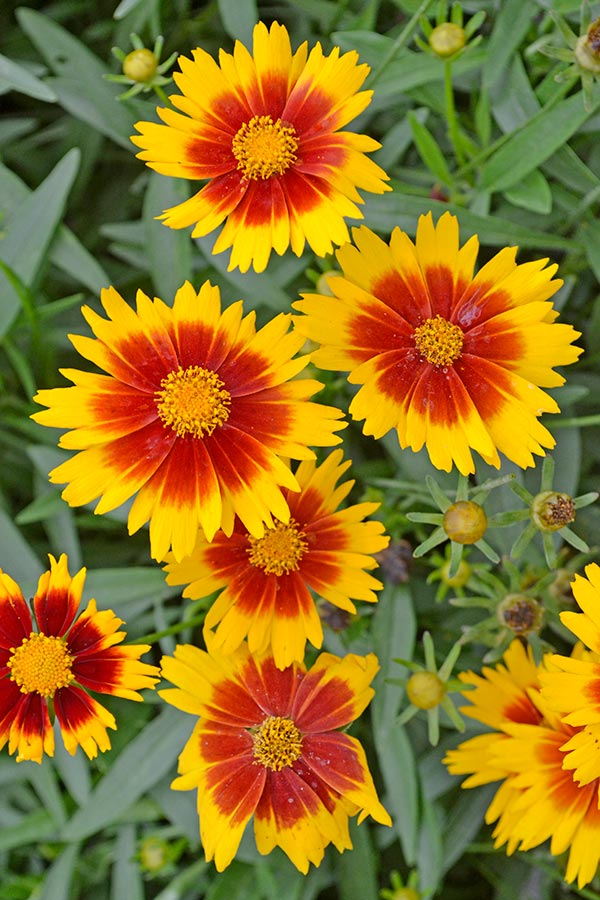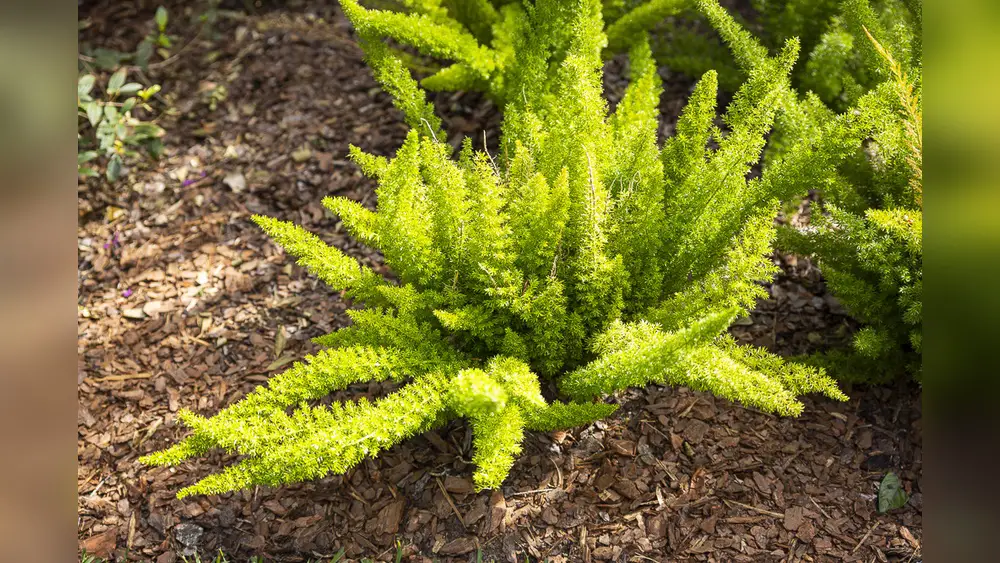If you’ve been struggling to find the right plants that thrive in the tricky spots of your Florida garden, you’re not alone. Partial shade areas can be challenging, but they don’t have to be a dead zone.
Choosing low growing plants suited for partial shade can transform those dim corners into lush, vibrant spaces. Imagine a garden where every inch flourishes, even where the sun only peeks through. In this guide, you’ll discover the best low growing plants that love Florida’s climate and partial shade conditions.
Ready to bring new life to your garden’s shaded spots? Let’s dive in and find the perfect green companions for your outdoor sanctuary.
Top Low-growers For Partial Shade
Partial shade areas in Florida gardens need special plants. Low-growing plants thrive here, adding texture and color. These plants stay close to the ground. They create a lush, green carpet or bright flower patches. Choosing the right low-growers helps maintain garden beauty and health.
Native Florida Plants
Native plants suit Florida’s soil and climate best. They need less water and care. Examples include Sunshine Mimosa and Blue Daze. Sunshine Mimosa spreads quickly, forming a soft green mat. Blue Daze has small blue flowers that bloom often. Both plants attract butterflies and pollinators. Using native plants supports local wildlife and nature.
Popular Ground Covers
Ground covers fill space and stop weeds in shaded spots. Asiatic Jasmine is popular for its dark green leaves. It grows fast and covers soil well. Another option is Creeping Jenny, with bright yellow-green leaves. These plants are low-maintenance and durable. They help keep soil moist and cool. Perfect for garden paths or under trees.
Flowering Perennials
Flowering perennials add color year after year. Liriope, also called Monkey Grass, blooms purple flowers in summer. It forms neat clumps and tolerates shade well. Another choice is Coral Bells, with colorful leaves and tiny bell-shaped flowers. These plants attract hummingbirds and bees. They brighten shady garden corners with ease.
Plant Features To Consider
Choosing the best low growing plants for a partial shade garden in Florida requires attention to specific plant features. These features help ensure the plants thrive in your garden’s unique conditions. Understanding growth habits, light and moisture needs, and soil preferences is essential. This knowledge helps you select plants that stay healthy and beautiful.
Growth Habit And Spread
Low growing plants come in various shapes and sizes. Some spread wide, covering ground quickly. Others grow in tight clumps or mats. Knowing how a plant spreads helps plan space and avoid crowding. Plants that spread slowly need less frequent trimming. Fast-spreading types work well as ground covers to prevent weeds.
Light And Moisture Needs
Partial shade means the plant gets filtered sunlight or shade part of the day. Some plants need more light, while others do better in deeper shade. Matching plants to the right light level avoids weak growth. Moisture needs vary too. Some plants prefer moist soil, others like it dry. Check each plant’s water requirements to keep them healthy.
Soil Preferences
Florida soils can be sandy, clay, or rich in organic matter. Low growing plants differ in soil needs. Some thrive in sandy, well-drained soils. Others prefer rich, moist soils. Testing your garden soil helps pick plants that will grow best. Amending soil with compost can improve plant health and growth.
Benefits Of Low-growing Shade Plants
Low-growing shade plants offer many benefits for Florida gardens. They thrive under trees and in spots with limited sunlight. These plants help keep soil healthy and gardens beautiful. They also support local wildlife and reduce garden maintenance. Choosing the right low-growing plants improves garden health and appearance.
Erosion Control
Low-growing shade plants hold soil in place with their roots. This stops soil from washing away during rain. Their dense growth covers bare ground, protecting it from wind and water. Erosion control keeps garden beds stable and prevents damage to walkways and structures.
Weed Suppression
These plants form a thick cover that blocks sunlight reaching weed seeds. Without sunlight, weeds cannot grow well. This natural barrier reduces the need for herbicides or hand weeding. A garden with low-growing shade plants stays neat and healthy with less effort.
Wildlife Habitat
Low-growing shade plants provide shelter and food for many small animals. Birds, insects, and beneficial bugs find homes in these plants. They support pollinators which help other plants grow. Creating wildlife habitat adds life and balance to your garden ecosystem.

Credit: blog.greatgardenplants.com
Design Tips For Partial Shade Gardens
Designing a garden for partial shade in Florida requires careful thought. The right design enhances the beauty of low growing plants. It also ensures they thrive in limited sunlight. Using smart design tips helps create a lush and inviting space. Each element plays a role in crafting a balanced garden.
Layering And Texture
Layer plants by height to create depth and interest. Place taller plants at the back or center. Use low growing plants in front or around edges. Mix different leaf shapes and sizes to add texture. Rough leaves contrast well with smooth ones. This variety keeps the garden visually appealing in shaded areas.
Color And Seasonal Interest
Choose plants with different shades of green and colorful blooms. Some plants brighten shaded spots with vibrant flowers. Select species that bloom in different seasons for year-round beauty. Use foliage color changes to add interest in cooler months. This strategy makes the garden lively all year.
Combining With Shrubs And Trees
Low growing plants work well under trees and shrubs. They cover bare soil and prevent weeds. Select plants that tolerate root competition from larger plants. Spread them around the base of trees or in shrub beds. This combination creates a natural, layered look in partial shade.
Care And Maintenance
Proper care and maintenance help low growing plants thrive in partial shade gardens in Florida. These plants need specific attention to water, pruning, and feeding. Following simple steps improves their health and appearance. You will enjoy a lush, colorful garden all year round.
Watering Strategies
Water plants deeply but less often to encourage strong roots. Check soil moisture before watering again. Morning watering reduces evaporation and fungal problems. Use mulch to keep soil moist and cool. Avoid overwatering, which causes root rot and weak plants.
Pruning And Deadheading
Remove dead or yellow leaves regularly to keep plants healthy. Deadhead spent flowers to promote new blooms. Prune lightly to shape plants and control size. Use clean, sharp tools to avoid damage and disease. Pruning helps maintain neat, compact growth.
Fertilizing Tips
Use balanced, slow-release fertilizer for steady nutrient supply. Feed plants during the growing season for best results. Avoid over-fertilizing, which can burn roots and reduce flowering. Organic compost improves soil health and plant growth. Follow label instructions for correct fertilizer amounts.

Credit: costafarms.com
Sources For Quality Plants
Choosing the right sources for quality plants makes all the difference in your Florida garden. Healthy plants grow better and last longer. They also cope well with partial shade conditions. Finding reliable suppliers ensures you get strong, low growing plants suited for your garden’s needs.
Local Nurseries
Local nurseries offer plants adapted to Florida’s climate. Staff there often know which low growing plants thrive in partial shade. Visiting a nursery lets you see the plants before buying. You can ask questions and get advice tailored to your garden.
Supporting local businesses also helps your community. Many nurseries provide native plants that attract pollinators. These plants usually need less care and water. Choose local nurseries for fresh, healthy plants ready for your garden.
Online Plant Collections
Online plant collections provide a wide variety of choices. They deliver plants straight to your door. These collections often include rare or hard-to-find species. Many websites specialize in shade-loving, low growing plants for Florida gardens.
Check for reviews and plant guarantees before buying. Reliable online sellers package plants carefully to avoid damage. Online shopping saves time and expands your options beyond local stock. It’s a good way to find unique plants for your garden.
Native Plant Societies
Native plant societies promote plants naturally suited for Florida. They offer resources, plant sales, and events for gardeners. These societies help you select plants that support local wildlife. Their plants thrive in partial shade and require less maintenance.
Joining a native plant society connects you with experts and fellow gardeners. You gain knowledge about growing conditions and plant care. Many societies host plant swaps or sales with quality native species. This is a valuable source for sustainable garden plants.

Credit: www.jacksonville.com
Frequently Asked Questions
What Are Good Shade Plants For Florida?
Good shade plants for Florida include Schefflera ‘Trinette’, Cordyline, Variegated Shell Ginger, Ti Plants, Crotons, Liriope, Asiatic Jasmine, and Mondo Grass. These thrive in low light and add color and texture to shaded gardens.
What Plants Work Well In Partial Shade?
Plants like Coral Bells, Bluebells, Heuchera, Columbine, Liriope, Mondo Grass, and Asiatic Jasmine thrive well in partial shade. These species adapt to limited sunlight while adding color and texture to shaded garden areas.
How To Landscape A Yard With Low Light In Florida?
Choose shade-tolerant plants like Asiatic jasmine, liriope, and crotons. Use mulch to retain moisture and improve soil. Add decorative stones for texture. Arrange plants to maximize limited sunlight. Regularly prune to maintain healthy growth in Florida’s low-light yards.
What Is The Best Low Maintenance Landscape In Florida?
The best low maintenance landscape in Florida includes native plants like Asiatic Jasmine, Liriope, and Crotons. They thrive in heat, resist pests, and need minimal watering, making them perfect for Florida’s climate. Use mulch and drought-tolerant groundcovers to reduce upkeep and enhance soil health.
Conclusion
Choosing the best low growing plants for partial shade in your Florida garden brings beauty and ease. These plants thrive well with less sunlight and add rich color and texture. They help cover bare spots and keep the garden looking fresh all year.
Try mixing different varieties for a lively and healthy garden space. Enjoy creating a peaceful, green haven that suits Florida’s unique climate perfectly. Start planting today and watch your garden flourish with shade-loving charm.

